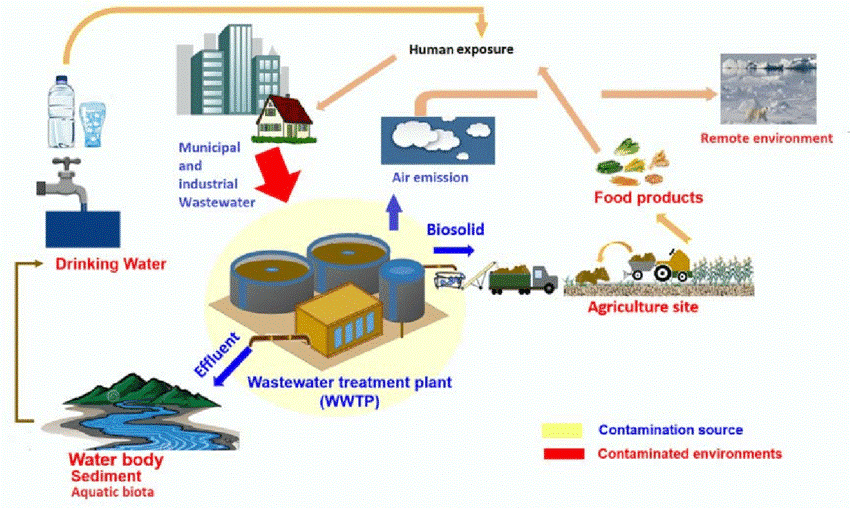Comprehensive PFAS Management in Residential Areas
Advanced Techniques for Efficient PFAS Contamination Elimination
The persistent difficulty of PFAS contamination demands the exploration of advanced removal methods that can efficiently address these dangerous compounds. Innovative innovations, such as sophisticated oxidation processes and different adsorption techniques, have actually emerged as promising options in mitigating PFAS from impacted atmospheres.
Comprehending PFAS Residences
Although per- and polyfluoroalkyl materials (PFAS) have actually been extensively used in various commercial and customer items as a result of their unique properties, their persistence in the environment poses considerable obstacles to public wellness and safety. PFAS are a group of artificial chemicals defined by a carbon-fluorine bond, one of the greatest chemical bonds understood, which adds to their remarkable security and resistance to degradation. This stability permits PFAS to accumulate in the environment and living organisms, causing potential negative health effects.
These exact same residential or commercial properties contribute to their ecological persistence, as PFAS do not easily break down with natural procedures. Comprehending the chemical buildings of PFAS is important for developing effective methods to manage and mitigate their ecological effect.
Cutting-edge Remediation Technologies
The determination of PFAS in the setting has actually spurred the growth of ingenious remediation innovations focused on successfully eliminating these contaminants from impacted communities. Among one of the most appealing techniques are innovative oxidation procedures (AOPs), which make use of powerful oxidants to break down PFAS compounds into less damaging materials. AOPs can be customized to target details PFAS frameworks, improving their efficiency.
Another emerging technology is the use of adsorption media, such as triggered carbon and ion exchange resins, which can selectively catch PFAS from contaminated water. These materials have shown significant removal performances, although routine substitute and regrowth are needed to keep efficiency.
Membrane filtration techniques, consisting of reverse osmosis and nanofiltration, are additionally obtaining traction in PFAS removal. These techniques can effectively divide PFAS from water, providing a viable remedy for treating infected resources. Additionally, thermal treatment methods, such as incineration, can break down PFAS right into non-toxic by-products, though they require cautious management to regulate exhausts.
Collectively, these ingenious removal innovations stand for considerable innovations in the ongoing battle against PFAS contamination, supplying different strategies to restore damaged atmospheres and secure public health and wellness.

Bioremediation Methods
Bioremediation strategies supply an appealing approach to dealing with PFAS contamination by using the natural capabilities of microorganisms to weaken these relentless compounds (m270 waste management). This method includes the use of microorganisms, fungi, and various other microorganisms that can metabolize or change PFAS compounds right into much less harmful by-products
Recent improvements in molecular biology see it here and ecological microbiology have actually improved our understanding of microbial areas and their prospective duties in PFAS deterioration. Scientists are actively checking out details strains of germs, such as Pseudomonas and Bacillus, which have actually shown the ability to break down specific PFAS substances.
In situ bioremediation methods, where microbes are stimulated straight in contaminated settings, can be particularly efficient. This approach commonly entails the application of nutrients or electron donors to promote microbial growth and task. In addition, ex lover situ approaches, such as bioreactors, enable controlled conditions that can enhance destruction prices.
Despite the assurance of bioremediation, challenges remain, including the complicated nature of PFAS substances and the demand for extensive field testing - m270 waste management. Continued study and development will be important to fine-tune these methods and analyze their performance in varied ecological contexts
Adsorption and Filtering Techniques
Attending to PFAS contamination often involves employing adsorption and filtration methods, which are designed to remove these persistent chemicals from water and dirt. Among the different methods, triggered carbon adsorption is extensively made use of because of its high surface and porosity, enabling reliable capturing of PFAS particles. Granular activated carbon (GAC) systems are particularly favored for check this dealing with large volumes of infected water, while powdered triggered carbon (POLITICAL ACTION COMMITTEE) can be utilized for smaller-scale applications.
Ion exchange materials likewise show guarantee in PFAS removal, operating by trading PFAS ions with much less dangerous ions in the water. This method has shown effectiveness in concentrating PFAS compounds, promoting their subsequent removal. In addition, membrane purification strategies, such as reverse osmosis and nanofiltration, run by utilizing semi-permeable membrane layers to different PFAS from water, properly lowering their concentrations.
While these approaches are efficient, they have to be meticulously picked based upon the particular PFAS substances present and the environmental context. Continual advancements in products science and design are bring about the development of unique adsorbents and purification systems that boost elimination performances and reduce operational expenses, therefore improving general removal initiatives.
Regulatory and Plan Considerations
Exactly how can efficient governing structures boost the management of PFAS contamination? Comprehensive plans are vital to guarantee a worked with and durable response to the challenges presented by per- and polyfluoroalkyl materials (PFAS) Rules can establish clear standards for surveillance, reporting, and remediating PFAS-contaminated websites, promoting accountability amongst sectors and public entities. (m270 waste management)

Furthermore, economic rewards and grants can be incorporated into plans to encourage the adoption of advanced remediation technologies. Policymakers must also prioritize research and growth, making certain that emerging techniques for PFAS removal are validated and executed successfully.
Additionally, public understanding and involvement are essential parts of any governing technique, equipping neighborhoods to support for their wellness and safety and security. Ultimately, a well-structured regulatory environment will not only enhance the management of PFAS contamination but also promote sustainable practices that protect future generations.
Conclusion
In summary, the complexity of PFAS contamination demands the fostering of sophisticated remediation approaches. Continued study and advancement in index this field remain essential to dealing with the difficulties posed by PFAS contamination.